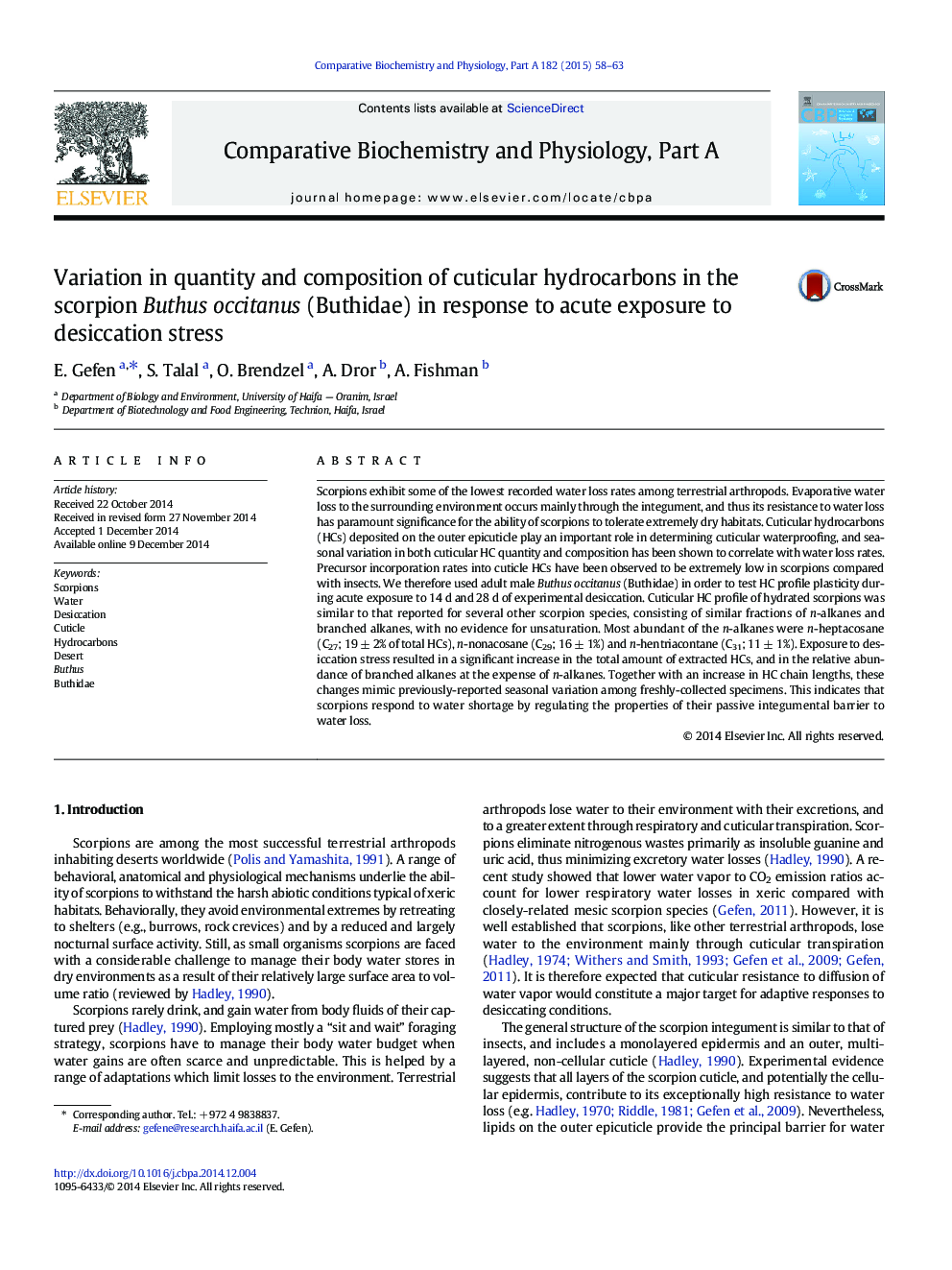| کد مقاله | کد نشریه | سال انتشار | مقاله انگلیسی | نسخه تمام متن |
|---|---|---|---|---|
| 1972084 | 1539005 | 2015 | 6 صفحه PDF | دانلود رایگان |

Scorpions exhibit some of the lowest recorded water loss rates among terrestrial arthropods. Evaporative water loss to the surrounding environment occurs mainly through the integument, and thus its resistance to water loss has paramount significance for the ability of scorpions to tolerate extremely dry habitats. Cuticular hydrocarbons (HCs) deposited on the outer epicuticle play an important role in determining cuticular waterproofing, and seasonal variation in both cuticular HC quantity and composition has been shown to correlate with water loss rates. Precursor incorporation rates into cuticle HCs have been observed to be extremely low in scorpions compared with insects. We therefore used adult male Buthus occitanus (Buthidae) in order to test HC profile plasticity during acute exposure to 14 d and 28 d of experimental desiccation. Cuticular HC profile of hydrated scorpions was similar to that reported for several other scorpion species, consisting of similar fractions of n-alkanes and branched alkanes, with no evidence for unsaturation. Most abundant of the n-alkanes were n-heptacosane (C27; 19 ± 2% of total HCs), n-nonacosane (C29; 16 ± 1%) and n-hentriacontane (C31; 11 ± 1%). Exposure to desiccation stress resulted in a significant increase in the total amount of extracted HCs, and in the relative abundance of branched alkanes at the expense of n-alkanes. Together with an increase in HC chain lengths, these changes mimic previously-reported seasonal variation among freshly-collected specimens. This indicates that scorpions respond to water shortage by regulating the properties of their passive integumental barrier to water loss.
Journal: Comparative Biochemistry and Physiology Part A: Molecular & Integrative Physiology - Volume 182, April 2015, Pages 58–63